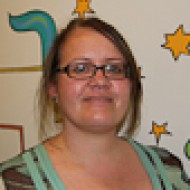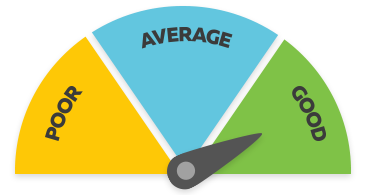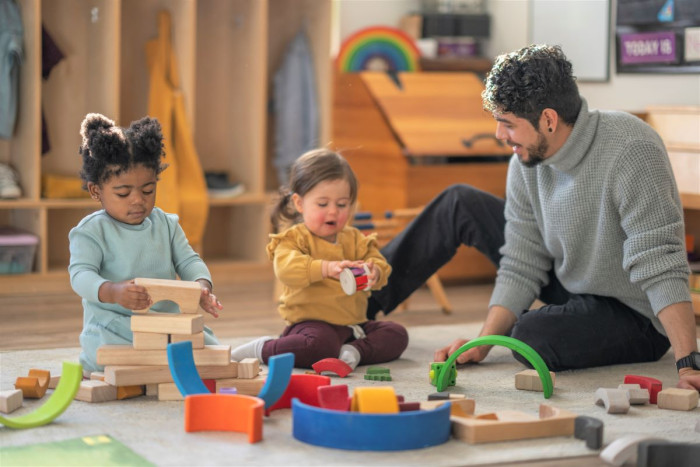Early Childhood Teacher
Kaiako Kōhungahunga
Alternative titles for this job
Early childhood teachers educate and care for young children in kindergartens, kōhanga reo or childcare centres. Kōhanga reo kaiako also help children learn te reo Māori and tikanga Māori (culture and customs).
Pay
Early childhood teachers usually earn
$49K-$78K per year
Early childhood teachers can earn
$48K-$95K per year
Source: TEC research.
Job opportunities
Pay
Pay for early childhood teachers varies depending on where they work, their qualifications and experience.
- Early childhood teachers usually earn $49,000 to $78,000 per year.
- Early childhood teachers can earn $48,000 to $95,000 per year.
Source: TEC research.
(This information is a guide only. Find out more about the sources of our pay information)
What you will do
Early childhood teachers may do some or all of the following:
- educate and care for babies and children
- help prepare meals, clean and tidy up, give medicines and change nappies
- plan daily programmes, learning experiences and routines for children
- make or adapt learning resources
- implement Te Whāriki, the early childhood curriculum
- assess and record the learning and development of each child
- discuss children's progress with their parents or caregivers, whānau and other education professionals
- run workshops for parents, caregivers and whānau
- attend social gatherings and hui
- prepare budgets, order supplies, and help manage the centre.
Kōhanga reo kaiako must ensure the education and care they provide benefits children's te reo Māori (language) and tikanga Māori (culture and customs) development.
Skills and knowledge
Early childhood teachers need to have knowledge of:
- different teaching methods and learning styles
- Te Whāriki, the early childhood curriculum
- how to plan lessons and evaluate children's progress
- behaviour management techniques, such as establishing boundaries and rewarding positive behaviour
- safety and emergency procedures
- food preparation and hygiene
- child learning and development, and early literacy and numeracy.
Kōhanga reo kaiako also need to be competent in te reo Māori (language), and knowledgeable about tikanga Māori (culture and customs).
Working conditions
Early childhood teachers:
- work 35 to 40 hours a week, depending on whether they work in a kindergarten, childcare centre or kōhanga reo
- work indoors and outdoors at early childhood services
- may take children on local trips to places such as marae, museums and playgrounds.
What's the job really like?

Carly Perrot
Early Childhood Teacher
Carly Perrot was inspired to become an early childhood teacher after seeing the enjoyment her daughter’s teachers were getting out of working with preschoolers.
“They’re actually having lots of fun,” Carly thought, as she dropped Maddie off in the mornings.
Being a mother helped
"Being a mother gives you skills and knowledge that you don’t get from training," adds Carly. “It gives you a better insight into how children think.”
Mixed-age setting keeps Carly on her toes
Carly works in a mixed-age kindergarten, where the children range from nine months to five years old.
"I specialise in teaching infants and toddlers, and I plan the learning experiences for this age group. I also manage these children's transitions from home to our centre, or from another centre to ours.
"It can be emotionally and physically tiring some days, because you’re pretty much doing everything for the children that their parents would do – feeding, toileting and so on – but it is so rewarding knowing you are helping them learn skills that they will use for the rest of their lives."
Advice for aspiring early childhood teachers
"If you’re interested in working in early childhood, go and check out some different centres, because each will have its own teaching philosophy and culture and you will hopefully find one that works for you."
Early childhood teacher video
Max talks about what it’s like to be an early childhood kaiako – 6:00 mins.
Delicious.
You could see if you could take apart this oven. Just tell me if you need some help at any point.
Oh, Harriett’s going up to the secret garden. Should we go with her?
Child: Yeah.
Max: I’ll pop you down so you can walk.
Child: I want to wear my gumboots.
Max: You want your gumboots?
Kia ora, I’m Max Christie and I’m an early childhood kaiako at Northland Childspace.
So a kaiako’s role is as an educator but also as a learner. That just means basically taking a step back quite a lot and learning from children and what they’re doing, rather than dictating to them what they are to learn. We like to respond to what they are interested in.
The role is very varied. There are a lot of different skillful tasks you need to do but we feel like it’s almost all about relationships.
Max: Would you like to find another book with me, Celeste?
Celeste: I want a hammer.
Max: While we say ka kite.
The relationships you have with children and with families and your fellow kaiako, the stronger your relationships are, the more success you’ll have in early childhood.
Parent: Thank you Max.
Max: That’s awesome.
Parent: Have a great day.
Child: That is golden shells.
Max: Golden shells?
Planning for children’s learning is definitely a collaborative process. I have regular meetings with my team and that keep us aware of children’s needs, aware of families’ needs and aware of our team and how they’re feeling.
We feel like free play is an incredibly important part of education, and children developing their own sense of self and their own independence. So a lot of my job is about observation, and just looking for what children need and at what time they need it. A lot of it’s to do with mediating conversations between children. Making sure that they’re using words to communicate their ideas and their problems with each other, so that they don’t revert to using their bodies to solve problems.
Max: Do you want some help to ask him? I’ll walk with you but can you talk to him?
Child: No.
Max: Are you sure? I think you can because you’re talking to me.
It’s a very important time of their lives to influence and to make sure that we all grow up to be positively contributing members of our society. Basically that involves just teaching and learning alongside them. Skills and also values such as empathy and aroha and manaakitanga. Just to be a good human being, that’s really our focus. It’s not an academic learning or rote learning, or listening to me, the teacher, it’s really about them exploring their own selves, their own friendships and in that way we encourage children to be independent learners.
At my centre we all run on different shift times. There’s somebody who comes in at 7am, and they are the opening kaiako, and they greet the children in the morning. And there’s someone who comes in at 8am to support them. I arrive here at 6am. Really my job is just to get to know the children and to help them with anything they need during the day. During my day we have breakfast at nine o’clock and eleven o’clock around about we have lunch.
Maggie, a fork for you to eat your rice.
Laila, that spoon goes in there.
And then after that the younger children will tend to have a rest or a sleep. We have afternoon tea in the afternoon and then we’ll have a late snack at five. I am the closing person so I finish at 6pm, after all the children and teachers have gone home.
See you, Arlo.
See you, Tony, thanks man.
That’s the sort of main rituals of our day. Eating and sleeping and of course nappy changes, also to help the older children with their toileting, their toilet learning, and so that’s a big part of the job too.
Child: Got to wash your hands.
Max: Yes.
Anytime in between is for the children to decide what they want to do with that time. The options are endless and free play really does mean that every day is so different.
You go up in the net.
An important trait for a kaiako would be to see children as capable and confident members of society who need to be respected.
Good luck, my friend.
And also someone who is very caring but also a lot of fun and likes to play.
Ma honga, paka hewi, poku, hopi, wai wai. Poo bum.
Someone who is creative and flexible. Someone who is committed to children and families.
That is a crazy book.
Child: Again.
Max: Again?
You do need a lot of patience to be a great kaiako. My role involves reading books several times in a row sometimes. It takes all sorts of people to create a good team of early childhood teachers. Because of that it’s a really good job for anyone who appreciates children and wants to learn more.
So to become a qualified early childhood educator you have to study at a university or polytechnic for three years if you haven’t studied before. And if you have studied you can do a one-year course to become qualified. You can also work in an early childhood centre as an unqualified teacher. However if you want to make a career out of early childhood, the best way is to study at a tertiary level.
Child: There’s a pirate!
Max: Up in the sky?
Child: Yeah.
Max: Sky pirates?
Children have an incredibly rich sense of how the world works and I love to investigate those with them.
He’s opening his mouth and having a look inside.
It’s turned me into a much more playful person.
Yummy.
It also encourages me to adventure and also see things from a different point of view.
I love this job because I think that it makes an impact on children's lives and therefore society. It’s a lot of fun and it’s actually helped me to get to know myself a lot better.
Entry requirements
- a Bachelor of Education (Early Childhood) or similar OR
- a Graduate Diploma in Teaching (Early Childhood) or similar
- an Annual Practising Certificate
- to pass a police check.
Scholarships available
Early childhood teacher scholarships for course fees and allowances are available for specific subjects, regions, and sectors such as kōhanga reo and Pacific language pre-schools.
Vulnerable Children Act
The Vulnerable Children Act 2014 means that if you have certain serious convictions, you can’t be employed in a role where you are responsible for, or work alone with, children.
Secondary education
You need University Entrance to do the study or training for this job.
Useful subjects include health education, home economics, music, dance and drama, painting, sculpture, photography, printmaking combined and te reo Māori.
Additional requirements for specialist roles:
Special Education Teacher
To become a special education teacher you need two or more years of early childhood teaching experience and full teacher registration. You must also complete a postgraduate qualification in the area of special education you want to teach in.
Personal requirements
Early childhood teachers need to be:
- skilled at communicating clearly with children and adults from a range of backgrounds and cultures
- organised, and good at solving problems quickly
- enthusiastic, open-minded and able to motivate children
- creative and adaptable
- able to work well under pressure
- firm and fair, with a sense of humour
- able to work well in a team
- committed to the kōhanga reo kaupapa (Māori language nest concept), if working in kōhanga reo.
Useful experience
Useful experience for early childhood teachers includes:
- babysitting or childcare work
- child counselling
- work with people with disabilities
- school holiday programme work
- working with children through groups such as Brownies and Scouts
- coaching sports teams.
Physical requirements
Early childhood teachers need to be reasonably fit and healthy.
Registration
Early childhood teachers need to be registered with the Teaching Council of Aotearoa New Zealand and have a current practising certificate.
Find out more about training
- Teaching Council of Aotearoa New Zealand
- (04) 471 0852 - enquiries@teachingcouncil.nz - teachingcouncil.nz
- TeachNZ
- 0800 165 225 - teachnz.admin@education.govt.nz - www.teachnz.govt.nz
- Montessori Aotearoa New Zealand
- 027 448 5525 - ce@montessori.org.nz- www.montessori.org.nz
- Te Kōhanga Reo National Trust
- (04) 381 8750 - info@kohanga.ac.nz - www.kohanga.ac.nz
- Te Rito Maioha Early Childhood New Zealand
- 0800 244 532 - akomai@ecnz.ac.nz- www.ecnz.ac.nz
What are the chances of getting a job?
Shortage of early childhood teachers
Demand for early childhood teachers is expected to continue to grow due to a shortage of qualified and experienced early childhood teachers. There are also gaps left by many early childhood teachers leaving or retiring.
According to the Census, 30,798 early childhood teachers worked in New Zealand in 2018. However, this is not enough to meet demand.
As a result, early childhood (pre-primary school) teacher appears on Immigration New Zealand's regional skill shortage list. This means the Government is actively encouraging skilled early childhood teachers from overseas to work in New Zealand.
Strong demand for speakers of te reo Māori and Pacific languages
Demand for early childhood teachers who speak and teach te reo Māori or Pacific languages is strong. Teach NZ offer scholarships to speakers of te reo Māori and Pacific languages to encourage them to train as early childhood teachers.
Types of employers varied
Early childhood teachers may work for:
- kindergartens
- education and care centres
- teacher-led home-based care agencies
- kōhanga reo.
Sources
- Education Counts website, accessed January 2018, (www.educationcounts.govt.nz).
- Immigration New Zealand, Regional Skill Shortage List, 27 May 2019, (www.immigration.govt.nz).
- New Zealand Now website, 'Preschool Care and Education', accessed January 2018, (www.newzealandnow.govt.nz).
- Piper, D, 'Youngest Pupils Impacted by Auckland Teacher Shortage', 27 January 2017, (www.stuff.govt.nz).
- Reynolds, P, chief executive, Early Childhood Council, Careers Directorate – Tertiary Education Commission interview, February 2018.
- Stats NZ, '2018 Census Data', 2019.
- Stats NZ, 'More Toddlers in Formal Early Childhood Care', 19 December 2017, (www.stats.govt.nz).
- Stats NZ, 'Childcare in New Zealand 2017:September Quarter-Sample Error Tables', 19 December 2017, (www.stats.govt.nz).
- Stuff website, 'What Sort of Early Childhood Education are Kiwis Getting?', 17 August 2017, (www.stuff.co.nz).
(This information is a guide only. Find out more about the sources of our job opportunities information)
Progression and specialisations
Early childhood teachers may progress into management roles such as head teacher or senior teacher/tumuaki.
They may also progress into:
- policy work
- teaching trainee teachers in universities or polytechnics
- youth or community work.
Kōhanga reo kaiako may use their knowledge of te reo Māori and tikanga Māori to move into training and policy roles.
Last updated 6 November 2024


